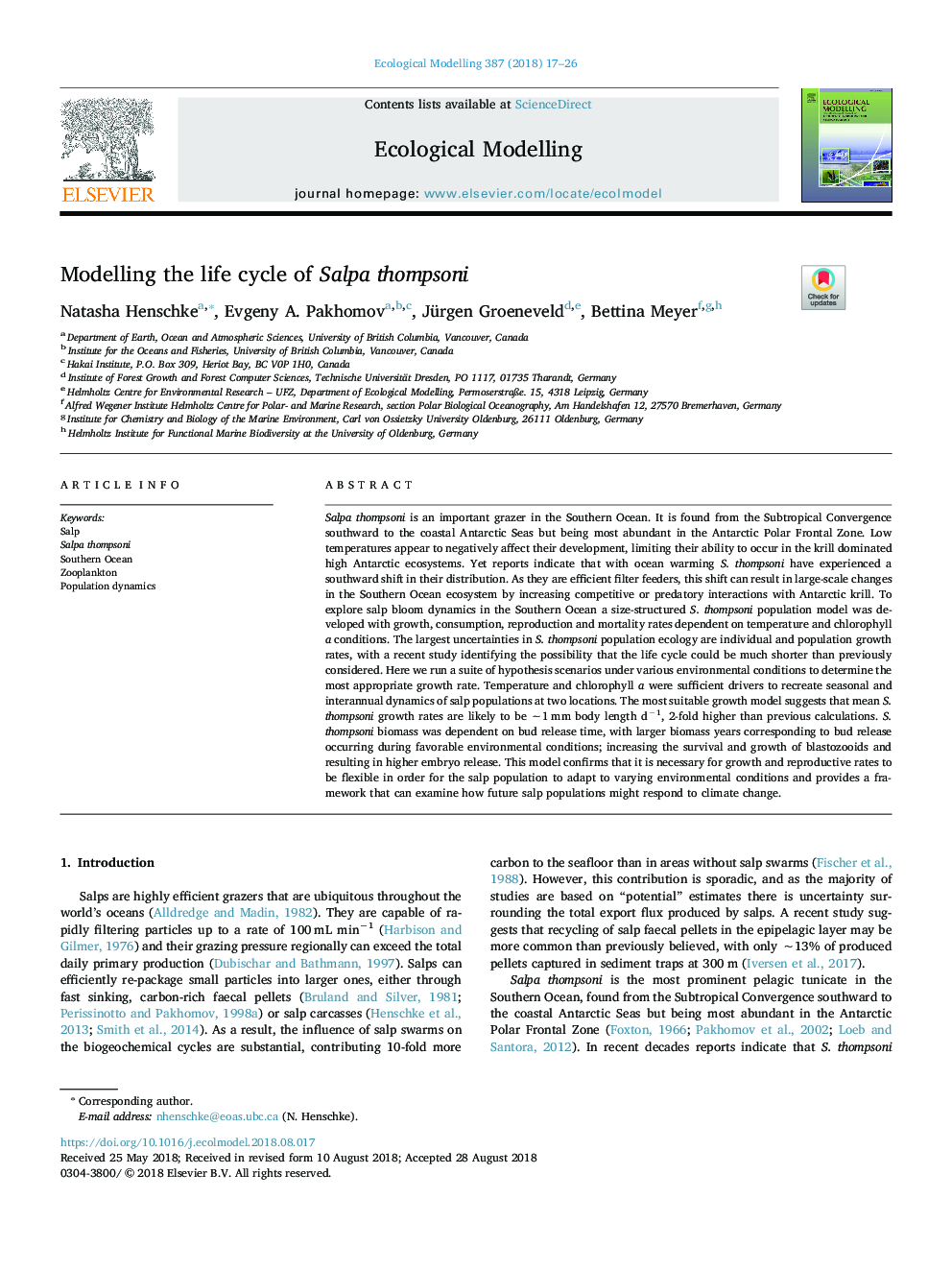| کد مقاله | کد نشریه | سال انتشار | مقاله انگلیسی | نسخه تمام متن |
|---|---|---|---|---|
| 8965883 | 1646748 | 2018 | 10 صفحه PDF | دانلود رایگان |
عنوان انگلیسی مقاله ISI
Modelling the life cycle of Salpa thompsoni
دانلود مقاله + سفارش ترجمه
دانلود مقاله ISI انگلیسی
رایگان برای ایرانیان
کلمات کلیدی
موضوعات مرتبط
علوم زیستی و بیوفناوری
علوم کشاورزی و بیولوژیک
بوم شناسی، تکامل، رفتار و سامانه شناسی
پیش نمایش صفحه اول مقاله

چکیده انگلیسی
Salpa thompsoni is an important grazer in the Southern Ocean. It is found from the Subtropical Convergence southward to the coastal Antarctic Seas but being most abundant in the Antarctic Polar Frontal Zone. Low temperatures appear to negatively affect their development, limiting their ability to occur in the krill dominated high Antarctic ecosystems. Yet reports indicate that with ocean warming S. thompsoni have experienced a southward shift in their distribution. As they are efficient filter feeders, this shift can result in large-scale changes in the Southern Ocean ecosystem by increasing competitive or predatory interactions with Antarctic krill. To explore salp bloom dynamics in the Southern Ocean a size-structured S. thompsoni population model was developed with growth, consumption, reproduction and mortality rates dependent on temperature and chlorophyll a conditions. The largest uncertainties in S. thompsoni population ecology are individual and population growth rates, with a recent study identifying the possibility that the life cycle could be much shorter than previously considered. Here we run a suite of hypothesis scenarios under various environmental conditions to determine the most appropriate growth rate. Temperature and chlorophyll a were sufficient drivers to recreate seasonal and interannual dynamics of salp populations at two locations. The most suitable growth model suggests that mean S. thompsoni growth rates are likely to be â¼1âmm body length dâ1, 2-fold higher than previous calculations. S. thompsoni biomass was dependent on bud release time, with larger biomass years corresponding to bud release occurring during favorable environmental conditions; increasing the survival and growth of blastozooids and resulting in higher embryo release. This model confirms that it is necessary for growth and reproductive rates to be flexible in order for the salp population to adapt to varying environmental conditions and provides a framework that can examine how future salp populations might respond to climate change.
ناشر
Database: Elsevier - ScienceDirect (ساینس دایرکت)
Journal: Ecological Modelling - Volume 387, 10 November 2018, Pages 17-26
Journal: Ecological Modelling - Volume 387, 10 November 2018, Pages 17-26
نویسندگان
Natasha Henschke, Evgeny A. Pakhomov, Jürgen Groeneveld, Bettina Meyer,